
Sisters
of Charity Hospital / Condominiums
14-20 St.
St. Louis Place, Buffalo, NY
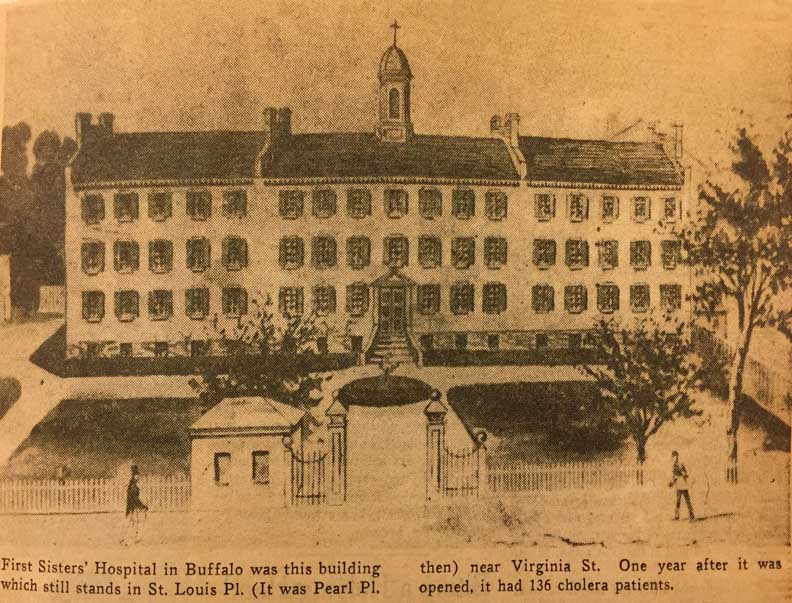 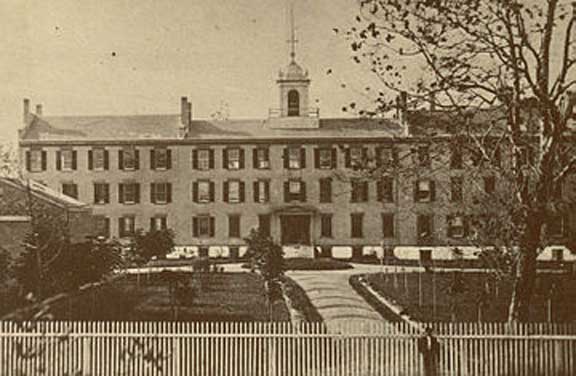 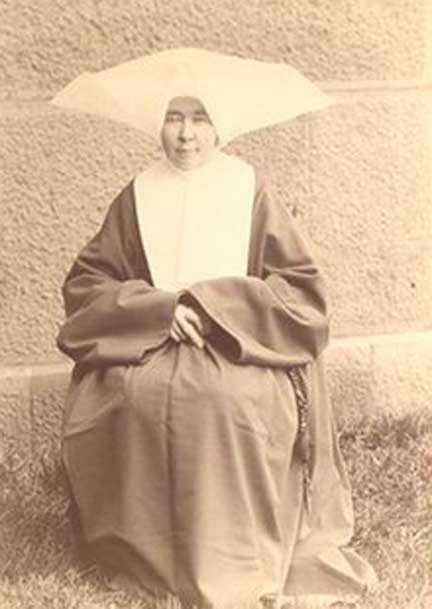 Sr. Ursula (Honora) Mattingly, DC, first administrator of the hospital  C. 2010 St. Louis Place. "This truncated little lane (St. Louis Place) was once home to Buffalo's first high school, the Literary and Scientific Academy, built in 1829. The school later became a Sisters of Charity Hospital. The structure still stands as No. 14, 18 and 20, transformed into row-house condominiums." - Allentown Association 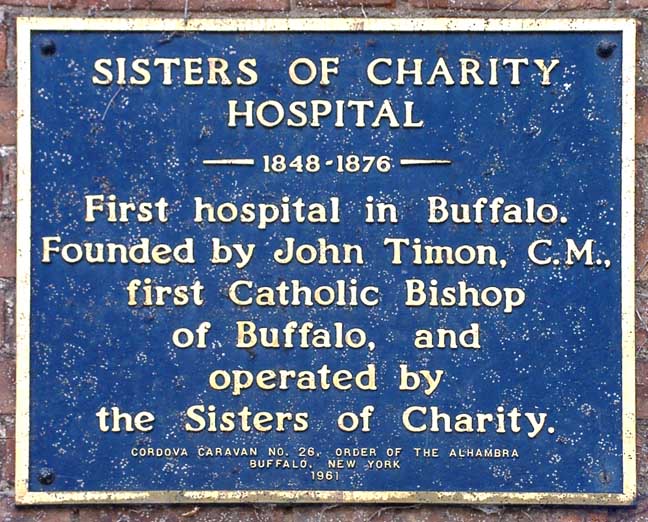 |
| Excerpt - Reprint Sisters of Charity Hospital Catholic Health (online June 2019) 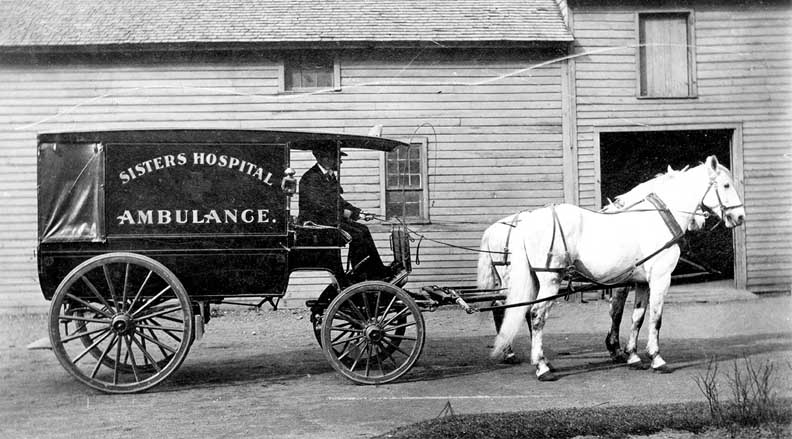 The
1840s was a decade of firsts. Buffalo was a booming transportation hub. Canal and
lake shipping were about to be overshadowed by the first railroad route
connecting through to the east. The first grain elevator, first
university, first elected mayor and first Roman Catholic bishop claimed
their roles in the growing town.
Newly appointed Bishop John Timon wasted little time in traveling to Baltimore to request the services of the Sisters of Charity – a religious community of women established in America by Saint Elizabeth Ann Seton – to create the city’s first hospital. Six Sisters returned to Buffalo with him – three for the hospital and three for an asylum and school. In a former school building at the corner of Pearl and Virginia Streets, Sister Ursula Mattingly (who tackled 22 assignments in 44 years as “one of God’s trouble shooters”) took matters in hand as the first President of the Board of Sisters of Charity Hospital. Chartered as the first regional hospital in October 1848, it was sorely tested by a devastating cholera outbreak in 1849. Sister Ursula’s willingness to take a chance on new therapies resulted in an astounding recovery of 80 of the 134 cholera patients admitted to the small center. No task, medical or political was beyond her challenge. When the No Nothing Party insisted there be no public payment to religious institutions for public services, she fought alongside her friend Bishop Bernard O’Reilly to win a $9,000 reimbursement from the state legislature. |
|
Excerpts
-
Reprint
History of the Sisters of Charity Hospital, Buffalo, New York, 1848-1900 By Jean Richardson Mellon Press (online June 2019) In 1848, the Sisters of Charity founded and operated the first hospital in the city, Buffalo Hospital of the Sisters of Charity (Sisters Hospital). The general historical literature has dismissed Catholic hospitals as ethnic hospitals. Too little attention has been paid to the role these hospitals have played in the “new” antebellum commercial cities and in the transition of medicine to its modern practice; nor has the role of women in 19th century hospital management received much attention. This study will analyze how the sister administrators/nurses gained and maintained control of their hospital and exercised “real” authority, within the context of patriarchy, and throughout the 19th century transformation of medical practice. By focusing on the development of Sisters Hospital from 1848-1900, one can trace the transformation of antebellum hospitals from warehouses of the poor sick to the post Civil War emergence of the modern hospital. The story of Sisters Hospital is also the story of changes in the role of physicians, nurses and in medical care, that is, the professionalization and modernization of the health care. By 1900, Sisters Hospital had survived and adapted to the tremendous changes in medical knowledge and the function of hospitals without destroying the orders’ authority over its hospital. "In the mid-nineteenth century, when the Sisters of Charity were doing their innovative work in Buffalo, they not only were responsible for the daily management of eighteen of the twenty-five Roman Catholic hospitals in the United States, but they controlled these institutions." - Professor David A. Gerber, State University of New York at Buffalo "The book's main strength is its analysis of the power of nineteenth-century religious women at a time when few women could claim that kind of authority and community leadership. Rejecting the stereotype of submissive, obedient women, Dr. Richardson offers a provocative analysis of the way that Catholic women religious negotiated with physicians, civic leaders, and patients to establish, govern and administer a sizable medical institution" - Ronald E. Batt, Professor of Clinical Gynecology and Obstetrics, State University of New York at Buffalo |
|
Sisters of Charity Hospital is Western New York's first hospital which began in 1848 when Bishop John Timon traveled to Baltimore to request the services of the Sisters of Charity. Six Sisters made the journey to Buffalo to begin their work. Sisters of Charity in America became known as the Daughters of Charity of St. Vincent de Paul in 1850, officially joining with the order established in France in 1633. By 1884, there were 4 separate Daughters of Charity hospitals in Buffalo, each fulfilling a specific need in the community: Sisters Hospital for the sick, St. Mary's Infant Asylum and Maternity Hospital for orphans and unwed mothers, Providence Retreat for the mentally ill, and Emergency Hospital (now Sheehan Memorial Hospital). Providence Retreat was closed in 1940, but in 1942 the building was used to house the merger of St. Louise de Marillac Maternity Hospital and St. Mary's Hospital. Then in 1948, Sisters Hospital moved to the present site and absorbed the previous merger. In 1981, Sisters Hospital opened the Alden Medical Center, serving eastern Erie County. In 1989, an outpatient chemical dependency (STAR) opened in Amherst followed in 1990 by a second STAR facility in West Seneca. During the 1990s, the hospital opened several clinical sites to other areas of Buffalo and Erie County. |